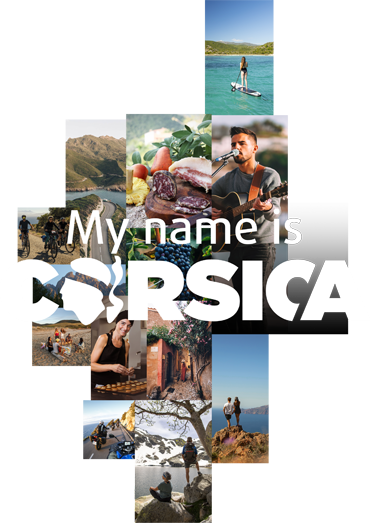Rechercher...
Explore Corsica
The best of Corsican museums and sites

The prehistoric site of Filitosa
Downstream from the Taravo valley in the village of Sollacaro, the statues and standing stones of Filitosa, for which the site is renowned, have been carefully preserved for 8,000 years. Having survived the roman occupation, the standing stones and the “Torre” have been with us since the 6th century. The prehistoric stone cutters and megalithic sculptors of the era have made Filitosa the greatest centre of statuary art on the island and the most prodigious in the Mediterranean. Discovered by Charles-Antoine Cesari in 1946, the site was studied and excavated by a CNRS (French National Centre for Scientific Research) researcher for 20 years.
 ©atc
©atc
The archaeological site of Cauria
The site of Cauria, near Sartène in the hills of the Gulf of Valinco, features stone alignments (I Stantari and Rinaghju) which are megalithic monuments comprised of standing stones, menhirs and granite statues. Cauria bears witness to human settlement as early as the Neolithic era. The dolmen of Funtanaccia can also be found on the site and is the best-preserved dolmen in Corsica. Should you be passing through Sartène while visiting Cauria, be sure to drop into its departmental museum of prehistory: numerous items from the prehistoric site and the region are on display there.
The prehistoric site of Cucuruzzu
The site of Castello di Cucuruzzu, near Lévie, is a fortress village dating back to the Bronze Age (2000 years B.C.) which was abandoned in the 3rd century B.C. Cucuruzzu incorporates elements such as blocks of granite rock stacked to make walls. A crudely carved staircase leading inside these walls takes you into a space around 400 m² in size and featuring a number of shelters and recesses. At the heart of the Alta Rocca, Cucuruzzu, also has an unobstructed view over the Aiguilles de Bavella.
 ©atc
©atc
Museum of Aleria
The Jérôme Carcopino Departmental Museum houses relics discovered on the archaeological site at Aleria. The museum, which exhibits items discovered during excavations of the ancient colony and necropolises, is based in the Fort of Matra, built by the Genoese in the 14th century. On the first floor, a number of exhibition rooms relay 15 centuries of Alerian and Corsican history, from the protohistoric period until the end of the Roman Empire.
 ©atc
©atc
Museum of Corsica in Corte
The Museum of Corsica, which opened in 1997, is a regional museum of anthropology. At the heart of the citadel, it is in perfect harmony with the architecture of the old town of Corté. The Museum of Corsica is simultaneously a place of remembrance, conservation and rural ethnology and a gallery of popular art.
 ©atc
©atc
Experience the Museum of Corte
Find out more about Central Corsica
The Palais Fesch
It is at the very heart of Ajaccio that the Palais Fesch can be found, an imposing and majestic Museum of Fine Arts. Renovated several years ago for the comfort of its visitors, the Palais Fesch is an official Musée de France (Museum of France) and brings together three major collections: An Italian collection, the Napoleonic collection and a Corsican collection, but is best known and recognised for its collection of Italian paintings, the largest of its kind in France after that of the Louvre.
 ©atc
©atc
Museum of Bastia
Based in Bastia’s citadel, this museum bears the mark of the Genoese Republic. Paintings, sculptures, furniture, and artefacts recount seven centuries of town and Corsican history. Some of the paintings in the Cardinal Fesch collection left to Bastia upon his death also comprise a museum of fine arts revealing a real panorama of Italian paintings from the 17th and 18th centuries.
 ©atc
©atc
Museum of Alta Rocca
Archaeology, paleoethnography, and history come together in this Museum, reflecting 10,000 years of human settlement. The collections exhibited illustrate the history and everyday lives of the peoples of the Alta Rocca from the 8th millennium B.C. until the Middle Ages.
 ©atc
©atc
Musée de la préhistoire Sartène (Sartène Museum of Prehistory)
The Sartène departmental museum of Corsican prehistory and archaeology houses the collections most typical of island archaeology since the earliest known settlements approximately 10,000 years ago until the end of the Genoese era in the 15th century A.D. Located at the old town’s summit, in a new building adjoining the old prison, the museum offers a majestic view over the Gulf of Valinco.
 ©atc
©atc
The Pasquale Paoli Museum of Morosaglia
The museum dedicated to Pasquale Paoli, the Father of the Corsican Nation, is installed in his birthplace in Morosaglia in the Center of Corsica. Objects and souvenirs are brought together, notably a bust by the English sculptor Flaxman, a portrait by the American painter Benbridge and two pistols.Finally, the funeral chapel preserves its ashes as well as the tombstone which adorned its vault in the London cemetery of Saint Pancrace.
 ©atc
©atc
Co Consult the network of Museums of Corsica and download the map
powered by cd-media.fr



